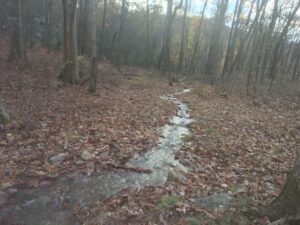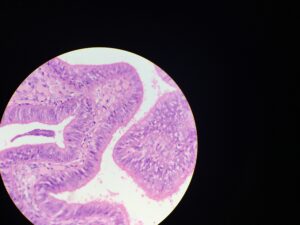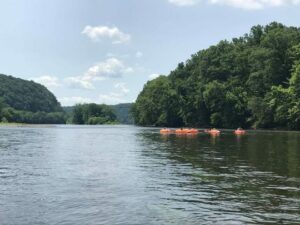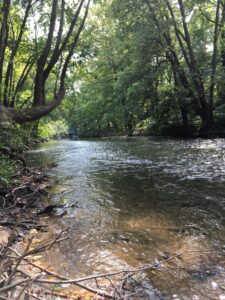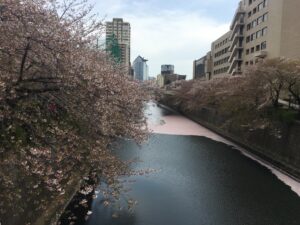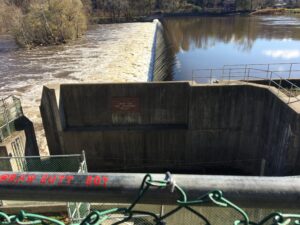
I went biking several weeks ago, and while on my trip, I came across the enormous structure. The structure spans the entirety of the river, and was a quite impressive piece of engineering. I could hear the rushing water from far away, and I had noticed that down just a bit from where the water flows over the edge of the structure, there were several trees submerged. In days prior, there had been heavy rainfall, so I was curious as to if some of the forcefulness of the water moving maybe was due to a higher volume being present as a result of the rainfall drainage. The structure is, as the sign suggests, a fish passageway (that is, the little compartment on the side that does not drop over the edge), though I am not sure as to how effective it is, given that other forms of fish passage projects don’t have a particularly successful track record.
